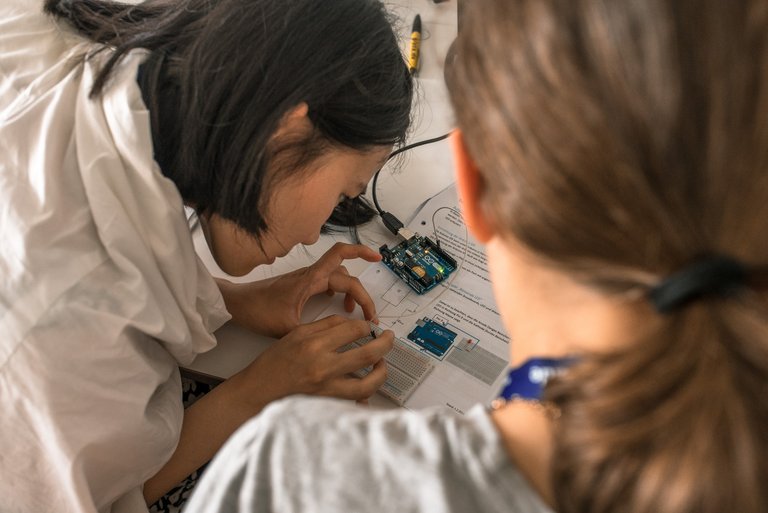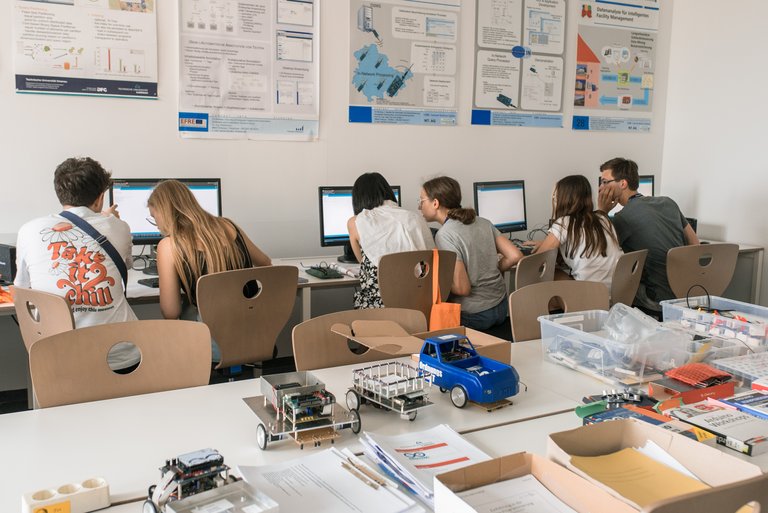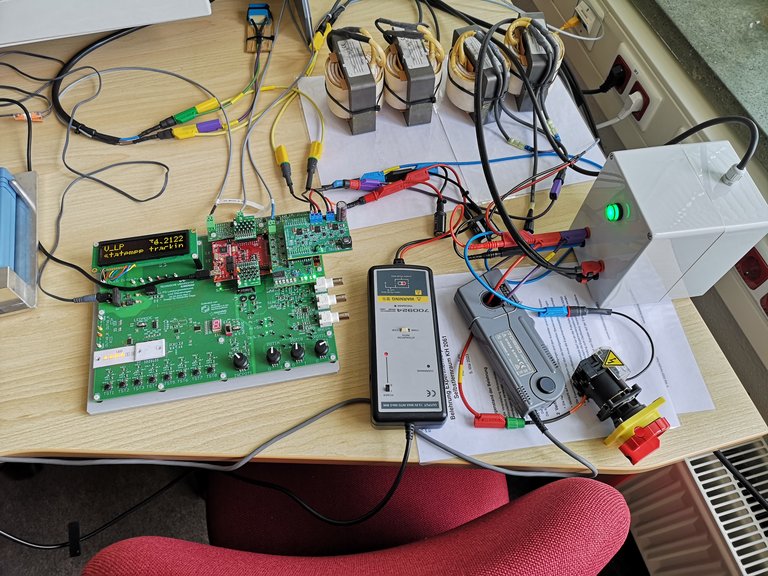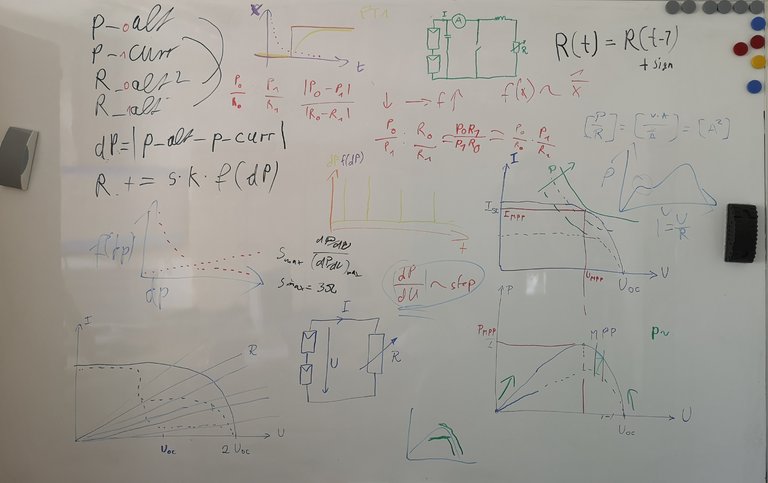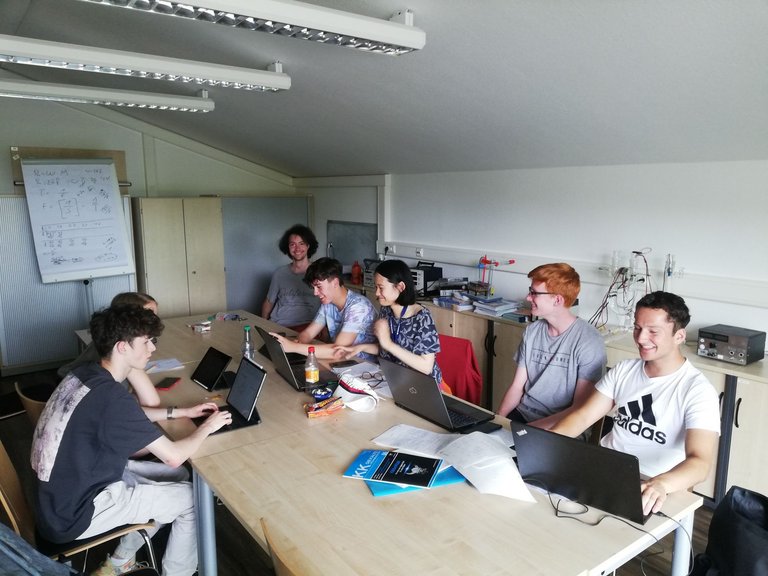Whether photovoltaics, geothermal energy, electrolysis for water splitting or a self-built wind turbine: At a four-day Science Camp at the TU Ilmenau, 20 students from the national Excellence School Network MINT-EC dealt with various aspects of energy supply from June 19 to 22. In small groups and supported by staff and student tutors, they explored from various technical perspectives how we can use our energy resources optimally and responsibly in the future.
The challenge of energy supply: Young people explore the possibilities and limits of power generation
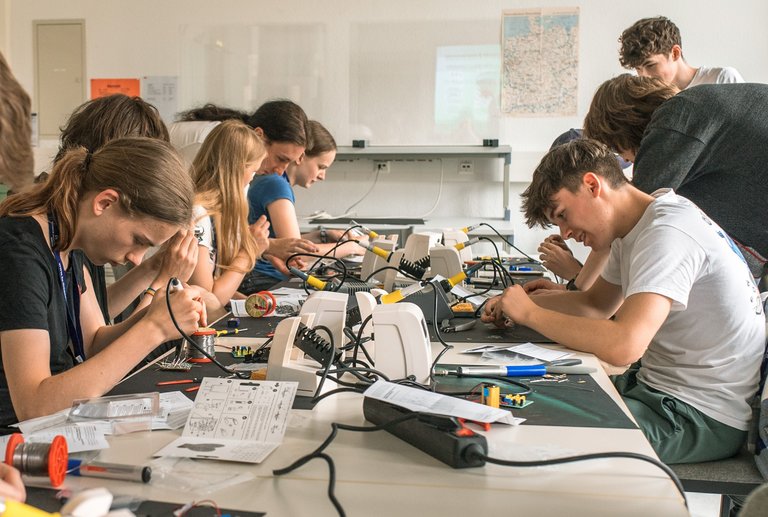
16-year-old Liliana traveled from near Münster to attend the MINT-EC camp at TU Ilmenau: "Having to research something from scratch, designing it and seeing how the project slowly develops - I find that super interesting." As with other camps before, as a student from a MINT-EC school, she wanted to take advantage of the opportunity to conduct in-depth research on a STEM topic with a hands-on mentality over the course of several days, deepening her school knowledge through real-world problems from research and the workplace. "But this camp was different from the other two I've been to," Liliana said:
This time we got a really big project to work on and really get into. So the time just flew by.
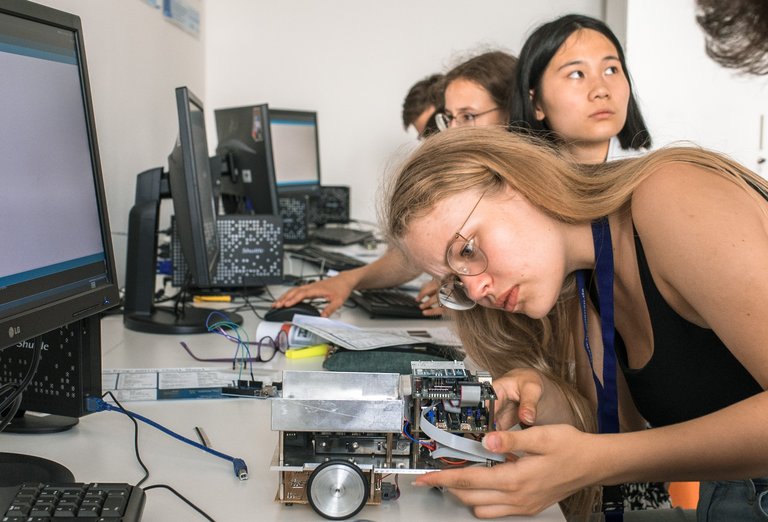
As a prelude, Liliana and the other participants first received an interdisciplinary workshop on soldering and programming with Arduino by students in the practicING project. Dr. Jan Schnabel from the Fraunhofer Institute for Manufacturing Engineering and Automation in Stuttgart also introduced the young people to the topic of energy supply with a lecture on the "Application of quantum computing in hydrogen research". During the camp, the young people also visited the Thuringian Innovation Center for Mobility (ThIMo) and the Center for Micro- and Nanotechnologies (ZMN) of the TU Ilmenau, hiked together and exchanged ideas with students during studytalk and barbecues.
Starting on the second day, the students then approached the topic of energy supply in small groups. While Liliana, Dominik, Juri and Marlon researched how much energy can be obtained from a self-built wind turbine, the power electronics group programmed and implemented software for optimal "electricity harvesting" with solar modules. Other students looked at how geothermal energy, i.e. heat from the earth, can be used effectively for human energy supply from a thermodynamics perspective, explored the fundamentals of energy materials by investigating what alternatives to silicon there are for producing solar cells, or went in search of a catalyst for water splitting that is particularly cheap and efficient with the help of electrochemistry and electroplating. They were guided by student tutors such as Adrien, who is studying regenerative energy technology in his second master's semester:
All the young people were very motivated, and it was fun to show them how scientific work works.
Liliana and her team also benefited from this: How can we achieve the greatest output power with a self-built low-tech wind turbine and thus support the population in the countries of the Global South to supply themselves with electricity autonomously, cheaply and climate-neutrally? To answer this question, the young people first looked at different types of wind turbines and energy conversion. "To our surprise, the group decided on a vertical axis with four blades, which, as specified in the Challenge, also works in low winds and is easy to maintain, so we had to improvise a lot and first buy materials at the hardware store on Tuesday," says Carsten Gatermann, who supervised the team together with Jakob Pflugbeil as a student tutor and member of Ingenieure ohne Grenzen e.V. (Engineers without Borders). Since both tutors are also members of Ingenieure ohne Grenzen e.V., the project idea for the low-tech wind turbine was quickly decided:
It was very exciting to work with the team and get involved in work where we all didn't know what the outcome would be. But it worked and I really liked the team dynamic.
The result was a prototype wind turbine that, while not the most efficient, fully meets the requirements for a low-tech wind turbine. The young people were also supported in building the model by the UNIKAT student workshop and the workshop of the Faculty of Electrical Engineering and Information Technology.
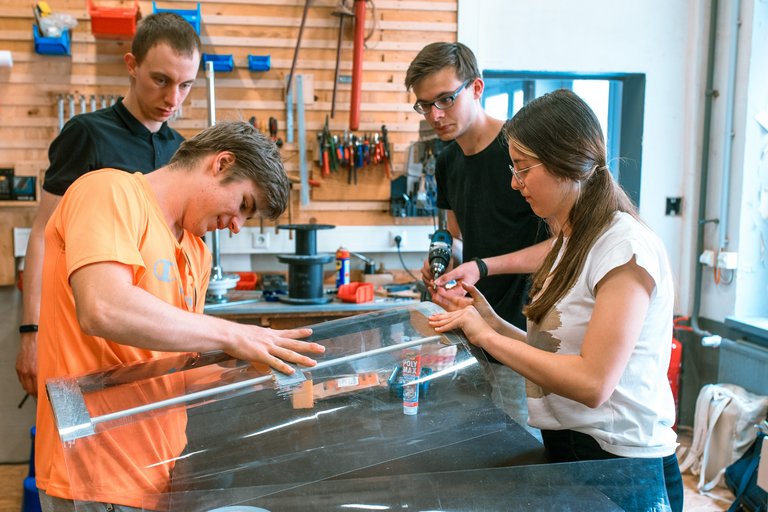
"It's great to have something at the end of the camp that you can look at and use and that really performs," says Liliana. "Most of the time, it's about making industrial processes more efficient," adds Juri, 17, from near Frankfurt.
Here, on the other hand, we were able to explore something that really creates a livelihood for people.
The young people have also already thought about how they might continue with their prototype after the end of the camp: For example, they can imagine cooperating with the "Water is Light" project of Engineers Without Borders to produce their own generator with the help of a kit. They also want to further improve the choice of fabric for covering the blades and the dimensions of the wind turbine, specify construction plans and 3D models, and investigate what influence the angle of attack of the blades and the distance from the axis have on the performance of the wind turbine.
Marlon, 18, is very pleased with the results of the camp:
I was very interested in physics and always try to gain as much experience as possible. I definitely succeeded in doing that here.
Dominik, also 18, is going back to his home near Frankfurt with many impressions:
It was very cool to do a project where I could go out with a practical result and also get insights into a possible study and educate myself.
Camp coordinator Jenny Gramsch is thrilled with how much interest the young people brought with them and how openly they ask their questions: "They want to get to the bottom of things and keep asking until they know. And they are aware of their own expertise," says the head of the Student Research Center at TU Ilmenau: "This shows how much potential there is in the upcoming generation, despite all the uncertainty about their future. But that's exactly where we can strengthen them: By using current topics to show them how the engineering sciences are using various methods to meet the challenge of resource scarcity and that solutions can only be created together, they gain self-confidence. The change of perspective has also helped our student tutors, and their role as teachers has strengthened their competence."
Other comments from participants
I particularly enjoyed the exchange with professors, tutors and participants.
In Ilmenau, you are close to people AND close to science.
Due to the focus on technology, the technical depth is very appealing to me.
I have the impression that you can be close to research even as a student if you want to be.
The best part was definitely the project work and getting to know scientific work.
Contact
Jenny Gramsch
Koordinatorin ProTELC/Leiterin des Schülerforschungszentrums


